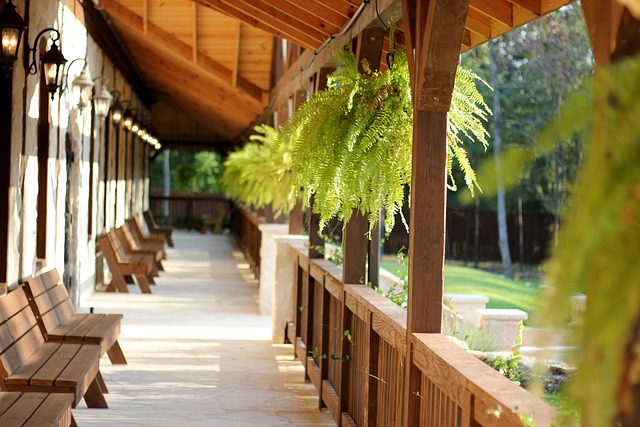Texas, the Lone Star State, is a vast and diverse land that offers something for everyone, from the sprawling deserts of West Texas to the lush forests of the Piney Woods. Whether you’re interested in exploring its vibrant cities, enjoying outdoor activities, or simply basking in its rich culture, there’s no bad time to visit Texas. However, depending on your preferences and interests, some months may be more ideal than others. In this article, we’ll explore the best time to visit Texas throughout the year and what you can expect during each month.

Why Should You Visit Texas: Exploring the Lone Star State’s Allure
Texas, often referred to as the Lone Star State is a vast and diverse destination that beckons travelers from all corners of the globe. With its rich history, vibrant culture, stunning natural landscapes, and a host of exciting attractions, there are plenty of compelling reasons why you should visit Texas. Here are some of the top reasons to embark on a Texan adventure:
1. Cultural Diversity:
Texas is a cultural melting pot with a unique blend of Mexican, Texan, and cowboy influences. Immerse yourself in the state’s rich heritage by exploring its museums, historic sites, and diverse cuisine.
2. Music Scene:
Texas is famous for its music, from country and blues to rock and hip-hop. Visit iconic music cities like Austin, the “Live Music Capital of the World,” and experience live performances in intimate venues.
3. Natural Beauty:
Texas boasts diverse landscapes, including deserts, forests, rolling hills, and beautiful coastlines along the Gulf of Mexico. Explore the stunning Big Bend National Park, admire the bluebonnet-filled fields in the Hill Country, or relax on the pristine beaches of South Padre Island.
4. Outdoor Adventures:
Texas offers a wide range of outdoor activities, from hiking and biking to kayaking and fishing. Enjoy world-class birdwatching, rock climbing, and stargazing in the state’s many parks and wilderness areas.

5. Culinary Delights:
Savor Texan cuisine, which includes mouthwatering barbecue, Tex-Mex, and Gulf Coast seafood. Visit local food markets, food trucks, and upscale restaurants to sample the diverse flavors of Texas.
6. Historical Significance:
Texas played a pivotal role in American history, from the Alamo to the Texas Revolution. Explore historic sites and museums to learn about the state’s contributions to the nation’s heritage.
7. Festivals and Events:
Texas hosts a myriad of festivals and events throughout the year, celebrating everything from music and food to culture and arts. Don’t miss the South by Southwest (SXSW) festival in Austin or the State Fair of Texas in Dallas.
8. Warm Hospitality:
Texans are known for their friendly and welcoming nature. You’ll likely experience the state’s famous hospitality wherever you go.
9. Urban Exploration:
Explore vibrant cities like Austin, Dallas, Houston, and San Antonio, each with its unique character, entertainment, and shopping opportunities.
10. Space Exploration:
Texas is home to NASA’s Johnson Space Center, where you can learn about space exploration and even witness astronaut training.
11. Rodeo and Western Culture:
Experience the excitement of rodeo events and immerse yourself in the cowboy culture that Texas is famous for.
12. Unique Festivals and Events:
Texas hosts a wide range of unique events, such as the Texas Renaissance Festival, which transports visitors back in time to a medieval world of knights and dragons.
What is the best time to visit Texas?
The best time to visit Texas depends on your preferences and what you want to experience during your trip. Texas is a vast state with diverse landscapes and climates, so the ideal time to visit can vary depending on the region and activities you have in mind. Keep in mind that Texas is a large state, and the climate can vary significantly from one region to another.
Coastal areas have a more humid climate, while the western part of the state tends to be drier and hotter. Be sure to check the specific weather conditions and events for the region you plan to visit.
What to Wear in Texas?
Given the variation in climate, it’s essential to pack accordingly for your trip to Texas. Lightweight clothing, sunglasses, and sunscreen are a must during the hot summer months, while layering is advisable in the cooler seasons. Don’t forget comfortable walking shoes, as Texas offers plenty of opportunities for exploration, whether you’re in a city or the great outdoors.
The Texan Climate:
Before diving into the specifics of each month, it’s essential to understand the Texan climate. Texas is known for its diverse weather patterns, influenced by its immense size. Generally, the state experiences a hot and humid climate in the summer and milder, more pleasant weather in the winter. However, the weather can vary significantly from region to region.
When to Go to Texas:
Texas, the second-largest state in the United States, offers diverse landscapes, rich culture, and a wide array of attractions for visitors. To make the most of your Texan adventure, it’s crucial to understand the state’s climate and the best times to visit. Here’s a seasonal breakdown of when to go to Texas, taking into account the weather conditions throughout the year.
The best time to visit Texas largely depends on your preferences and the activities you have in mind. Here’s a breakdown of the different seasons in Texas and what each offers:
- Spring (March to May):
- Spring is one of the most pleasant times to visit Texas, with mild temperatures and blooming wildflowers.
- Ideal for outdoor activities like hiking, biking, and exploring state parks.
- Popular events like the South by Southwest (SXSW) festival in Austin take place during this time.
- Summer (June to August):
- Summers in Texas can be scorching, especially in the central and southern regions.
- The Gulf Coast offers relief with its sea breeze, making beach vacations enjoyable.
- Water-related activities such as swimming and tubing are popular during this season.
- Fall (September to November):
- Fall is another excellent time to visit Texas, with pleasant temperatures and colorful foliage in some areas.
- The state’s many festivals, such as the State Fair of Texas in Dallas, make this season lively and enjoyable.
- Winter (December to February):
- Winters in Texas are mild in the southern regions but can get cold in the northern areas.
- Christmas events and celebrations, particularly in San Antonio and Grapevine, are popular attractions.
Months to visit in Texas:
To help you plan your visit to Texas more specifically, here’s a brief overview of what each month has to offer:
January:
January is an excellent time to visit Texas for those who prefer cooler temperatures. While the northern parts of the state may experience chilly weather, the southern regions, such as the Gulf Coast and cities like Houston and Corpus Christi, offer mild, comfortable temperatures in the 50s and 60s Fahrenheit. This is an ideal time to explore the state’s cultural attractions, like the San Antonio Missions or the museums in Dallas.
February:
February brings similar weather to January, making it another great month for travelers who enjoy cooler temperatures. You can visit the Texas Hill Country, known for its scenic beauty and charming small towns like Fredericksburg. Additionally, Mardi Gras celebrations in Galveston and San Antonio’s Fiesta San Antonio offer a taste of Texan culture.
March:
March is when Texas starts to warm up, making it an excellent time for outdoor activities. Wildflowers begin to bloom, and the state’s parks and nature reserves come to life. Big Bend National Park is a popular destination for hikers and nature enthusiasts during this time. Austin’s South by Southwest (SXSW) festival also takes place in March, attracting music, film, and tech lovers from around the world.
April:
April is arguably one of the best months to visit Texas. The weather is pleasantly warm but not scorching hot yet. This is prime time for exploring the state’s outdoor wonders, like the Bluebonnet trails in the Texas Hill Country. It’s also a great time to visit the iconic Texas rodeos, such as the Houston Livestock Show and Rodeo.
May:
May marks the beginning of summer in Texas. The weather gets warmer, and you can enjoy activities like swimming and tubing in the many rivers and lakes. If you’re a fan of barbecue, don’t miss the annual BBQ festivals that take place across the state, showcasing Texas’ famous smoked meats.
June:
June in Texas means hot summer weather. It’s an ideal time for water-based activities like boating, fishing, and tubing. The Gulf Coast beaches, such as those in South Padre Island, are perfect for a seaside getaway. Just be prepared for the heat and humidity, and stay hydrated.
July:
July continues the summer heat in Texas. It’s a popular month for family vacations, with attractions like Schlitterbahn Waterpark in New Braunfels and Six Flags Fiesta Texas in San Antonio offering relief from the heat. July 4th celebrations, including fireworks displays, are a highlight of the month.
August:
August remains hot and humid in Texas, making it a good time to explore the state’s indoor attractions like museums and art galleries. You can visit the Space Center Houston, the Alamo, or the Dallas Museum of Art to escape the heat while enjoying cultural experiences.
September:
September starts to bring relief from the summer heat as fall approaches. It’s an excellent time for outdoor adventures, especially in the Texas Hill Country, where the changing foliage adds a scenic dimension to your hikes and drives. Additionally, September is a good time to catch the beginning of the college football season, a beloved Texan pastime.
October:
October is a delightful month in Texas with pleasant weather and a range of outdoor festivals. The State Fair of Texas in Dallas is a must-visit, featuring food, entertainment, and cultural exhibits. Fall foliage in places like Lost Maples State Natural Area is a sight to behold.
November:
November continues the pleasant fall weather, making it an excellent time for hiking and camping. Thanksgiving is a major holiday in Texas, and you can experience traditional Texan feasts and parades. The small town of Fredericksburg is especially charming during this time.
December:
December in Texas is a festive season with mild winter weather. You can enjoy holiday events and light displays in cities like Austin and San Antonio. The River Walk in San Antonio is beautifully decorated, and Houston’s Theater District offers holiday performances.
The Weather in Texas:
It’s crucial to remember that Texas weather can be unpredictable, so it’s wise to check the local forecasts before your trip. Be prepared for occasional rain and thunderstorms, especially in the spring and early summer. Hurricanes and tornadoes are also a consideration, primarily along the Gulf Coast, so staying informed about weather updates is essential.
Texas has a wide range of climates due to its immense size and geographic diversity. The state can be broadly categorized into four regions: the Gulf Coast, Central Texas, West Texas, and the Panhandle. Each region experiences different weather patterns, so it’s essential to plan accordingly based on your destination.
- Gulf Coast (Houston, Galveston, Corpus Christi):
- The Gulf Coast region has a humid subtropical climate, which means hot, humid summers and mild winters.
- Summers (June to August) can be scorching and humid, making beach vacations popular.
- Winters (December to February) are mild, making this an ideal escape from colder northern climates.

- Central Texas (Austin, San Antonio, Dallas-Fort Worth):
- Central Texas experiences a mix of humid subtropical and semi-arid climates, characterized by hot summers and mild winters.
- Spring (March to May) is a delightful time with moderate temperatures, ideal for outdoor activities and festivals.
- Summers (June to August) can be hot and humid, so be prepared for high temperatures if you visit during this time.
- Fall (September to November) offers pleasant weather and vibrant fall foliage in some areas.
- Winters (December to February) are relatively mild, making it a great time to explore cities and enjoy festive celebrations.
- West Texas (El Paso, Big Bend National Park):
- West Texas features a semi-arid climate with hot summers and cool winters.
- Summers (June to August) can be scorching, especially in the desert areas, so plan outdoor activities accordingly.
- Fall (September to November) brings milder temperatures, making it an excellent time to explore the desert landscapes.
- Winters (December to February) are cool, but daytime temperatures are generally pleasant for outdoor adventures.
- The Panhandle (Amarillo, Lubbock):
- The Panhandle has a semi-arid climate with hot summers and cold winters.
- Summers (June to August) are hot and dry, making it suitable for outdoor activities.
- Fall (September to November) offers cooler temperatures and colorful foliage.
- Winters (December to February) are cold, and snow is possible, making this a unique time to experience a winter wonderland in Texas.
Best Hotels in Texas: Where to Stay and the Ideal Time to Travel
Texas, the Lone Star State, offers travelers a diverse range of experiences, from bustling cities to tranquil countryside, and its accommodations are no exception. Whether you’re planning a city escape, a beachfront getaway, or a nature retreat, Texas has exceptional hotels to suit every preference. In this guide, we’ll explore some of the best hotels in Texas and the ideal times to travel to make the most of your stay.
- The Driskill – Austin:
- Located in the heart of Austin’s vibrant downtown, The Driskill is an iconic luxury hotel with a rich history.
- Known for its classic elegance, excellent dining, and proximity to attractions like the Texas State Capitol and live music venues.
- Ideal for those seeking a blend of luxury and culture in the state’s capital.

- The Joule – Dallas:
- Situated in the heart of Dallas, The Joule is a boutique hotel known for its unique design and modern amenities.
- Features a rooftop pool, excellent dining options, and is within walking distance of Dallas’s Arts District and shopping areas.
- Perfect for urban explorers and art enthusiasts.

- Hotel Emma – San Antonio:
- Located in a renovated brewery, Hotel Emma offers a blend of history and luxury along the San Antonio River.
- Known for its rustic charm, excellent cuisine, and proximity to the Pearl District’s shops and restaurants.
- A great choice for a romantic getaway in San Antonio.

- The Post Oak Hotel at Uptown Houston:
- A luxurious retreat in Houston’s Uptown district, The Post Oak Hotel offers lavish accommodations and world-class amenities.
- Features a spa, fine dining options, and is close to high-end shopping at The Galleria.
- Ideal for those seeking opulence and convenience in Houston.
- Cibolo Creek Ranch – Marfa:
- For a unique Texas experience, consider Cibolo Creek Ranch in the picturesque town of Marfa.
- Offers upscale ranch accommodations in a stunning desert setting, with activities like horseback riding and stargazing.
- Perfect for travelers looking for an escape to the Texas countryside.
Best Time to Visit Big Bend National Park:
Big Bend National Park is a vast and rugged wilderness located in West Texas, offering dramatic landscapes, hiking, and stargazing opportunities. The best time to visit Texas Hill Country and Big Bend National Park largely depends on your preferences for weather and outdoor activities. Spring and fall are generally considered the most pleasant seasons for both regions, offering a mix of comfortable weather and natural beauty.

Best time to visit the Texas Hill:
The best time to visit the Texas Hill Country is typically during the spring and fall seasons when the weather is mild, and the natural beauty of the region is at its peak. Here’s a breakdown of the best times to visit:
Spring (March to May):
Spring is arguably the most popular time to visit the Texas Hill Country. The weather is mild, with temperatures ranging from the 60s to 80s°F (15-30°C). Wildflowers, including the iconic bluebonnets, blanket the countryside, creating breathtakingly beautiful landscapes. Ideal for outdoor activities such as hiking, biking, and exploring state parks. Spring festivals and events celebrate the region’s natural beauty.
Fall (September to November):
Fall is another excellent time to visit the Texas Hill Country, particularly in September and October. The weather is pleasant, with cooler temperatures and lower humidity. Vibrant fall foliage adds a touch of color to the landscape, especially in areas like Lost Maples State Natural Area. Many cultural festivals and events take place during this season.
Winter (December to February):
While winters in the Texas Hill Country can be cooler, they are still relatively mild compared to many other parts of the country. Winter offers a quieter and more peaceful experience with fewer crowds. The holiday season brings festive events and holiday-themed attractions to the region.
Summer (June to August):
Summer in the Texas Hill Country can be hot and humid, with temperatures often exceeding 90°F (32°C). While it’s not the most comfortable time for outdoor activities, summer is perfect for enjoying the region’s rivers and lakes through activities like tubing and swimming. Be prepared for summer crowds, especially near water attractions.

Discovering Texas: A Seasonal Travel Guide
Texas, the Lone Star State, offers a diverse range of experiences throughout the year, making it an ideal destination for all types of travelers. From the bustling cities to tranquil natural landscapes, Texas has something to offer every adventurer. To help you plan your visit, we’ve broken down the seasons and highlights of Texas travel.
- Cool (March to May):
- Springtime in Texas is characterized by mild temperatures and blooming wildflowers, making it one of the most pleasant times to visit.
- Ideal for outdoor activities like hiking, biking, and exploring the state’s numerous parks.
- The shoulder season offers a balance of comfortable weather and fewer crowds.
- Hot (June to August):
- Texas summers can be scorching, especially in central and southern regions, where temperatures regularly soar above 90°F (32°C).
- Perfect for beach vacations along the Gulf Coast, offering sea breezes and water activities.
- Summer festivals and outdoor events are in full swing, but be prepared for the heat.
- Rainy (September to February):
- Fall and winter bring milder temperatures, making it an excellent time for city exploration, cultural festivals, and holiday festivities.
- September and February are part of the shoulder season and offer pleasant weather with fewer crowds.
- Rain can be more frequent during this period, especially in late summer and early fall.
Peak Times for Visitors:
When planning a visit to Texas, it’s important to consider the peak times for tourists, as these periods often come with higher prices, larger crowds, and increased demand for accommodations and attractions. Understanding when these peak times occur can help you make informed decisions about when to visit and how to plan your trip. Here are the peak times for visitors to Texas:
October and March:
These months are peak times for visitors to Texas due to the pleasant weather and a variety of outdoor and cultural events. March marks the arrival of spring and the stunning blooming wildflowers, while October offers pleasant fall conditions.
Winter Delights in Texas
- Winter is the perfect season for those interested in hikes, art galleries, and holiday festivities.
- Enjoy the mild winter weather in cities like San Antonio and take part in festive holiday celebrations.
- Texas’s rich cultural scene shines, with art exhibitions, theater performances, and music festivals.

Shoulder Season for Wildflowers and the Great Outdoors
- The shoulder season, including September and February, provides a comfortable climate with fewer crowds.
- If you’re a nature enthusiast, this is the ideal time to witness Texas’s breathtaking wildflowers in full bloom.
- Explore the great outdoors, hike through picturesque landscapes, and savor the tranquility of the state’s natural beauty.

Summer Festivals and Temperature Extremes in Texas:
Summer in Texas is not just about the heat; it’s also a time for vibrant festivals and events that celebrate the state’s diverse culture and traditions. However, it’s important to be prepared for the hot and often scorching temperatures that accompany these festivities. Here’s a look at some of the notable summer festivals and what to expect in terms of temperature extremes:
South by Southwest (SXSW):
South by Southwest (SXSW) is an annual festival and conference that takes place in Austin, Texas, offering a wide array of things to do in Texas. It is one of the largest and most influential events of its kind, attracting attendees from all over the world. SXSW is a unique convergence of music, film, interactive technology, and various forms of media and art.
- When: Typically held in March, but preparations and satellite events often begin in late February.
- Where: Austin.
- What to Expect: SXSW is a massive showcase of music, film, interactive technology, and culture. It draws creatives and industry professionals from around the world.
- Weather: In March, the weather in Austin is usually mild, making it a pleasant time to enjoy the festival.
.jpg)
Houston Livestock Show and Rodeo:
The Houston Livestock Show and Rodeo, often referred to simply as the Houston Rodeo, is one of the largest and most iconic rodeo and livestock exhibitions in the world. Held annually in Houston, Texas, this event celebrates Western culture, agriculture, and entertainment.
- When: Late February to early March.
- Where: Houston.
- What to Expect: This iconic event combines rodeo competitions, livestock shows, and a star-studded concert lineup. It’s a celebration of Texas’s cowboy heritage.
- Weather: Late February and early March typically offer mild, spring-like weather in Houston.

Temperature Extremes in Texas: Understanding the Lone Star State’s Climate
Texas, the second-largest state in the United States, boasts a diverse climate that spans from humid subtropical in the east to arid in the west. As a result, the state experiences a wide range of temperature extremes throughout the year. Here’s a closer look at these temperature extremes:
Hottest Temperatures:
Summer Heatwaves: Texas is renowned for its scorching summers, with some of the hottest temperatures recorded in the country. The peak of summer, typically in July and August, brings sweltering heat to many parts of the state.
- In central and southern Texas, daytime temperatures often exceed 90°F (32°C) and can frequently soar above 100°F (38°C).
- Cities like Austin, San Antonio, and Houston experience hot and humid conditions during the summer, which can make outdoor activities challenging.
- Desert Heat in West Texas: The western part of the state, including areas around El Paso and Big Bend National Park, experiences desert-like conditions with extremely high temperatures.
- In these regions, daytime highs in the summer can easily reach well above 100°F (38°C).
- It’s essential to stay hydrated and take precautions when exploring the desert landscapes.

Coldest Temperatures:
Chilly Winters in the North: Northern and western Texas can have relatively cold winters, particularly in the Panhandle and parts of West Texas.
- During the coldest months, which typically fall between December and February, daytime temperatures in these areas may hover in the 30s and 40s°F (around 0-10°C).
- Overnight lows can drop below freezing, and snowfall is not uncommon in these regions.
- Milder Winters in the South: In contrast, the southern and coastal regions of Texas enjoy milder winter temperatures.
- Cities like Houston, Corpus Christi, and Galveston generally experience daytime highs in the 50s and 60s°F (10-20°C) during the winter months.
- Snowfall is a rare occurrence in these areas.
.jpg)
Extreme Weather Events:
In addition to temperature extremes, Texas is also prone to various weather-related events, including:
Thunderstorms: Texas experiences frequent thunderstorms, particularly in the spring and early summer. These storms can bring heavy rainfall, lightning, and occasional hail.
Tornadoes: Texas is part of Tornado Alley, and tornadoes can occur throughout the year, with peak tornado season typically occurring from April through June.
Hurricanes: The Texas Gulf Coast is susceptible to hurricanes and tropical storms, especially during the Atlantic hurricane season from June to November. Coastal areas can experience heavy rainfall, strong winds, and storm surges.
Droughts: Periodic droughts affect various parts of Texas, leading to water shortages and agricultural challenges.
Conclusion:
The best time to visit Texas ultimately depends on your preferences and the region you plan to explore. Whether you’re seeking a summer beach getaway, a springtime adventure, or a festive winter holiday, Texas has something to offer year-round. Just remember to stay prepared for the state’s diverse weather conditions, and you’re sure to have a memorable Texan experience. Texas offers a wide array of experiences for travelers of all interests and preferences.
Whether you’re seeking adventure in the great outdoors, a taste of Texan culture and cuisine, or a journey through history, the Lone Star State has something to offer every visitor. Come and discover why Texas is a destination that captures the hearts of those who venture within its borders. For more travel updates, visit the Journey Index.




